by Ger Cawdell, Victoria, BC, Canada
- Published: Wednesday, January 25 2017 19:51
This third and final installment regards the types of wood I utilize for my solar pyrography art. My main criteria for wood selection is the ability of the wood to burn; the softer the wood, the easier it burns. For this reason I work with the wood of coniferous trees. Deciduous trees take longer to burn, especially with the smallest magnifying glass. Also of importance to me is reducing my impact on the environment, thus I obtain my wood from sustainable sources, salvaging most of my material from construction waste.
The most common type of wood I am able to easily obtain in decent sizes is Western Redcedar. Not only is Western Redcedar very easy to burn but it releases a pleasant aroma. Another easily burned wood is pine; its lightness of colour offers the advantage of providing great contrast between the burned line and the wood surface. Infrequently I use Yellow Cedar, which is also light in colour but much denser than the types of wood named above. This density makes Yellow Cedar more difficult to burn. My final source of wood is driftwood. Usually the driftwood burns decently but not as easily as clean wood. Occasionally on the beach I find full planks which I cut into suitable dimension but I often find driftwood of interesting shapes. The first five images show comparisons between the types of wood I use most frequently.
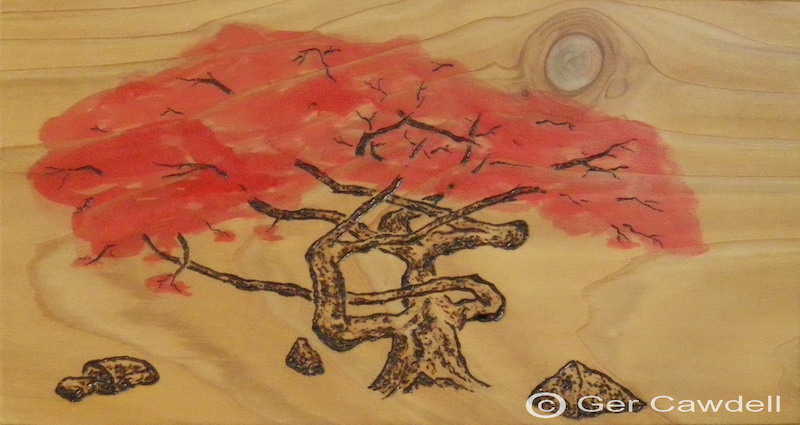
Japanese Maple at Takata Japanese Garden 2016 - on Western Redcedar
5 7/8” x 11”
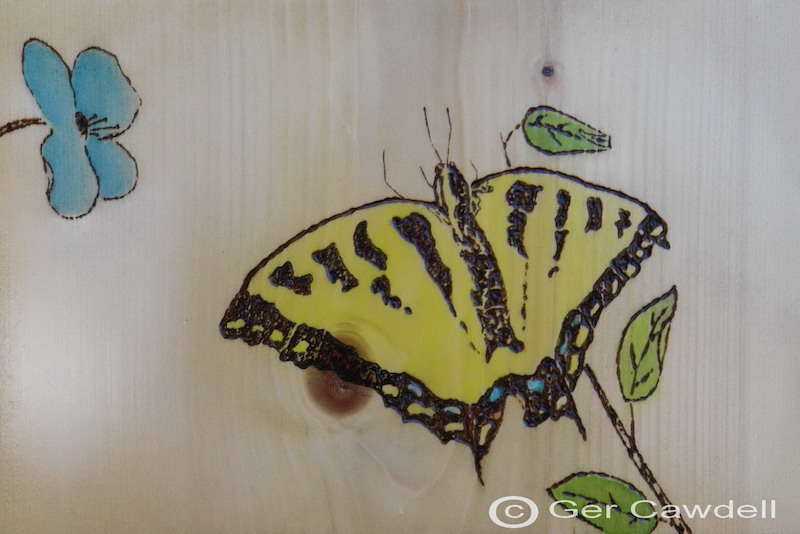
Western Tiger Swallowtail Butterfly 2015 - on pine
7 ¼” x 11”
 Wood Duck 2015 - on Yellow Cedar
Wood Duck 2015 - on Yellow Cedar
4 3/8” x 7”
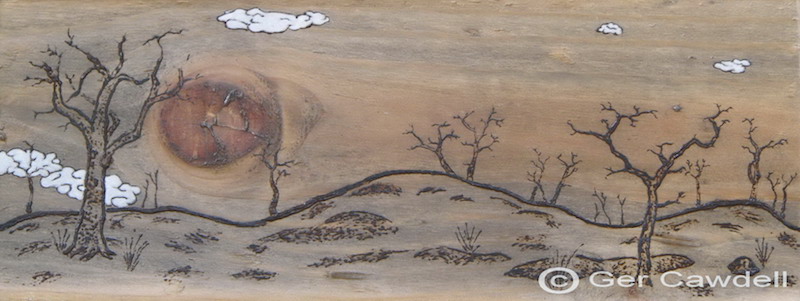
Garry Oak Meadow, Winter 2016 - on driftwood (cut from plank)
5 9/16” x 14”
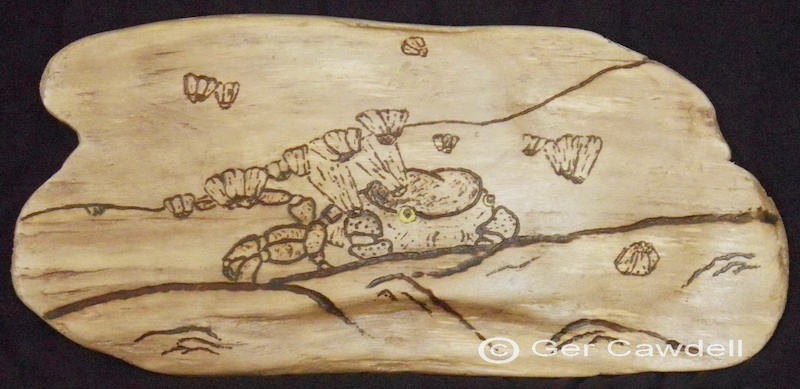
Purple Shore Crab 2016 - on driftwood, found shape
5 1/8” x 11”
As seen in the above images, colour can be added easily to each type of wood.
My second criteria for wood selection involves grain and figure. Often the grain will be straight with no unique features. I use these for any type of image but the most interesting applications involve making use of knots and uneven grain or other patterns (known as figure).
As mentioned in my first post, knots make great representations of the sun or moon. I also look for other applications for these knots, such as augmenting a hole created by a woodpecker.

Pileated Woodpecker 2016 - Western Redcedar
13 3/16” x 7 ¼”
The next two images show how non-linear lines of grain can be used to enhance the image. Instead of burning in ocean waves I was able to use the curved grain to indicate wave activity in this seascape of Washington State’s Olympic Mountains and a leaning tree on Vancouver Island.

Leaning Douglas Fir 2016 - Western Redcedar
5 7/8” x 10”
By positioning curved grain vertically I was able to imitate the mountain peaks in the next landscape.
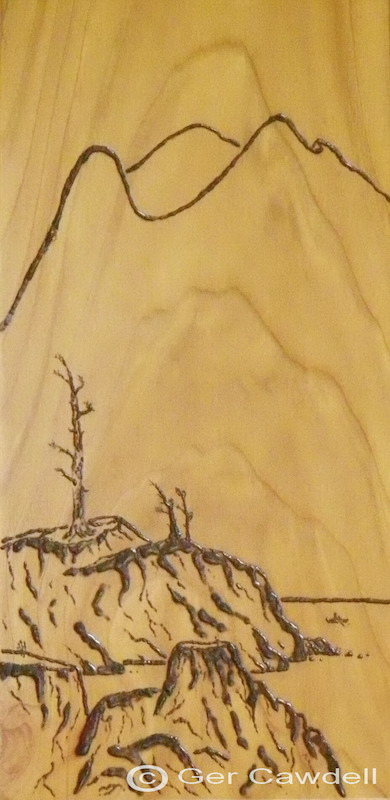
West Coast 2016 - Western Redcedar
12” x 5 7/8”
I find that wood burning in public is a great way to introduce children to a productive use of magnifying glasses. Not only can the kids be creative, but they may also want to learn more about optics and the sun. Many times during the summer, when I burn images at Victoria’s Bastion Square Market, I have seen children (and adults) awed by the distinctive activity of creating art with a magnifying glass. Their amazement is evident even after a brief demonstration.
I wish to thank Astronomers Without Borders, and especially Andee Sherwood, for the opportunity to introduce solar pyrography to a wider audience.

Mountain Range With Birds - Western Redcedar
4 3/8” x 33 3/8”








Comments